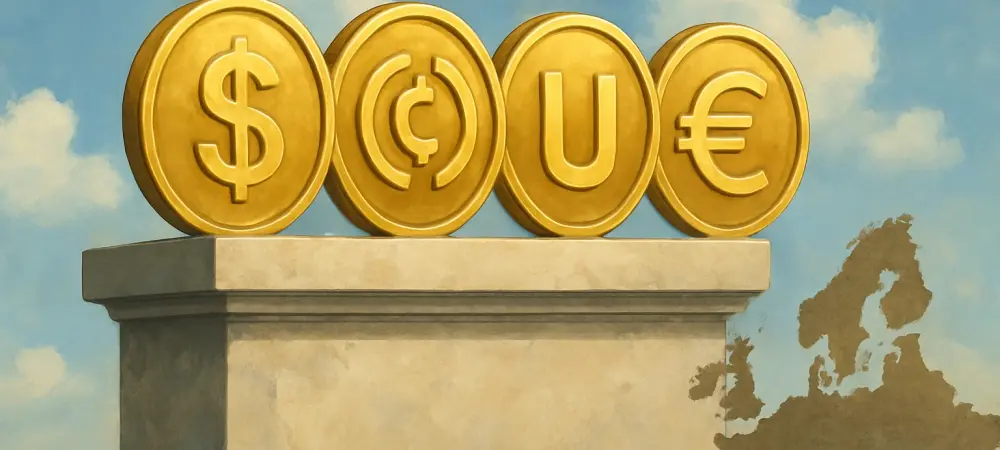Today, we’re thrilled to sit down with Nicholas Braiden, a pioneering figure in the blockchain space and a passionate advocate for financial technology’s potential to revolutionize digital payments and lending. With years of experience advising startups on harnessing tech for innovation, Nicholas offers unparalleled insight into the rapidly evolving world of cryptocurrencies. In this interview, we dive into the groundbreaking launch of Europe’s first Stablecoin Index ETP by Virtune, exploring the motivations behind this product, its unique structure, the growing role of stablecoins in finance, and what this means for investors across the continent.
Can you share what drove Virtune to launch the first Stablecoin Index ETP in Europe?
Absolutely. The inspiration came from recognizing a clear demand for regulated, accessible ways to invest in the stablecoin ecosystem. Stablecoins have become a cornerstone of digital finance, offering stability in a volatile crypto market, and yet there wasn’t a product that allowed investors to gain broad exposure to this space without the risks of picking individual assets. We saw an opportunity to bridge that gap, especially as both retail and institutional investors in Europe are increasingly curious about stablecoins’ potential. It’s about providing a safer entry point into this transformative sector.
How does the Virtune Stablecoin Index ETP work, and what makes its structure unique for investors?
The ETP is designed to give investors exposure to the infrastructure and assets powering the stablecoin market, without directly holding stablecoins themselves. Instead, it tracks an index of key blockchains and crypto assets—like Ethereum, which holds a 42.9% allocation, and XRP at 23.5%—that are integral to stablecoin operations. It’s 100% physically backed by these assets, securely stored in cold storage with a trusted custodian, and rebalanced quarterly to stay aligned with market trends. This setup lets investors tap into the growth of stablecoins while diversifying across the ecosystem.
Why did Virtune choose to list this ETP on major exchanges like Nasdaq Stockholm, Nasdaq Helsinki, and Deutsche Börse Xetra?
Listing on these exchanges was a strategic move to ensure accessibility and credibility. These platforms are well-regulated and widely recognized, making the ETP available to a broad audience of both institutional and retail investors across Europe. They also provide the transparency and trust that investors look for when stepping into newer asset classes like crypto-focused products. It’s about meeting investors where they already are and ensuring they can trade through familiar brokers and banks.
What specific benefits does this ETP offer to someone interested in the stablecoin space?
The biggest advantage is diversification. By focusing on the broader stablecoin ecosystem rather than a single stablecoin or blockchain, the ETP spreads out the risk. If one asset or chain underperforms, the impact is cushioned by the others in the index. It’s also a more regulated and structured way to invest compared to buying individual tokens on crypto exchanges, which can be daunting for newcomers. Essentially, it’s a smarter, safer way to participate in the stablecoin boom without the stress of managing a portfolio yourself.
How do you see stablecoins shaping the financial landscape, particularly in Europe?
Stablecoins are a game-changer. They enable 24/7 transactions and faster, cheaper cross-border transfers, which is why we’re seeing European banks and financial institutions adopt them at a rapid pace. They’re redefining how money moves in a digital world. The trend of banks launching their own stablecoins—like the recent push for MiCA-compliant euro-backed tokens—shows how seriously the industry is taking this technology. It’s not just a niche anymore; stablecoins are becoming a vital part of modern finance, especially as Europe works to integrate blockchain into regulated frameworks.
Can you break down the importance of the ETP’s quarterly rebalancing and how the annual management fee was determined?
Quarterly rebalancing is critical to keep the ETP reflective of the dynamic stablecoin market. It ensures the index adjusts to changes in adoption or performance among the underlying blockchains and assets, maintaining a balanced and relevant portfolio. As for the 1.95% annual management fee, it was set to cover the operational costs of managing the product, including secure storage and rebalancing, while remaining competitive for investors. We wanted to strike a balance between affordability and the value of providing a professionally managed, regulated investment vehicle.
What is your forecast for the future of stablecoins and products like the Virtune Stablecoin Index ETP in the coming years?
I’m incredibly bullish on stablecoins and structured products like ours. As regulatory frameworks like MiCA solidify in Europe, we’ll see even greater adoption from traditional finance players, which will drive stablecoin market caps higher. Products like the ETP will likely become go-to options for investors seeking exposure without the volatility of other crypto assets. I expect we’ll see more innovation in this space—potentially more specialized ETPs or even global expansion of stablecoin-focused investment tools. The next few years could redefine how we think about money and investing.

